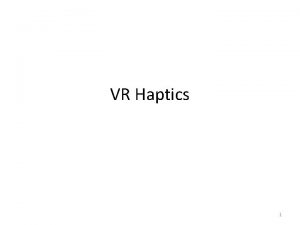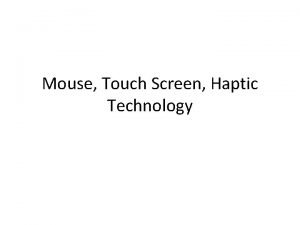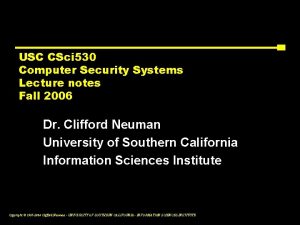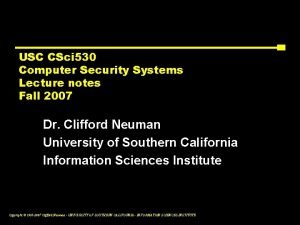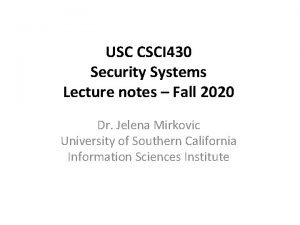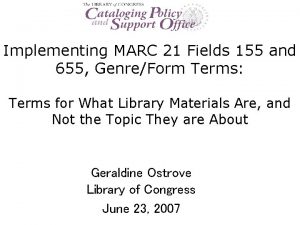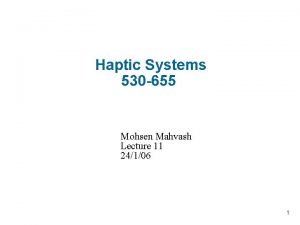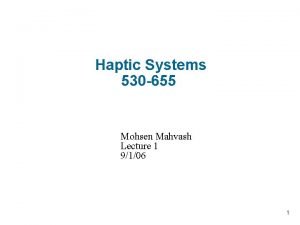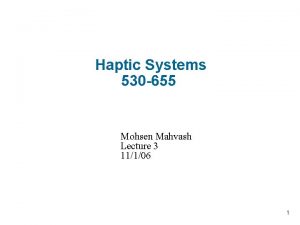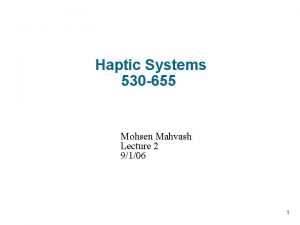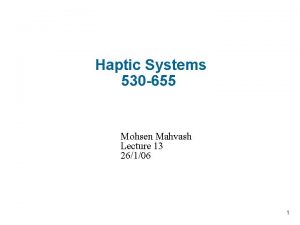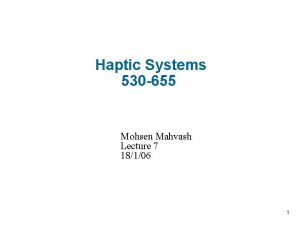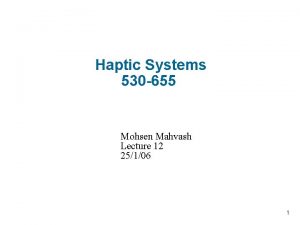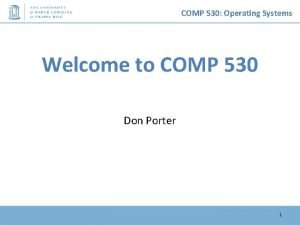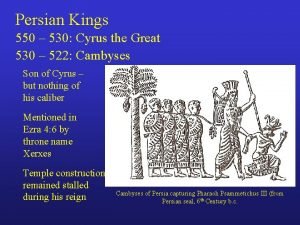Haptic Systems 530 655 Mohsen Mahvash Lecture 9













- Slides: 13

Haptic Systems 530 -655 Mohsen Mahvash Lecture 9 20/1/06 1

Haptic rendering of deformable bodies Ø Problem statement Ø Theory of deformation Ø Methods for calculating deformation Ø Finite Element Method Ø Pre-computation Ø Tool-based pre-computation Ø References 2

Problem statement Problem Statement n n Real-time computation of deformation (30 Hz for graphic rendering) Real-time computation of contact forces (1000 Hz for haptic rendering Objects with surface meshes Graphic rendering: updating the positions of the vertices of the object (for example 500 vertices) Haptic rendering: updating the applied forces to the tip of a haptic device 3

Theory of Deformation Displacement: Strain: Material: Stress: Energy: 4 See Ref 1, 5

Computational Approaches v v Continuum models n Finite element method n Boundary element method n Finite difference method Mass-spring method 5

Finite Element Method Body Virtual work: 6 See Ref 1

Surface nodes responses Element responses Body responses Surface responses Free node responses 7

Pre-computation n n Define free nodes and fixed nodes Calculate deformation response for unit displacements at each free node Derive a reduced-order linear system that directly relates the nodal displacements for local contact region Calculate contact forces 8 See Ref 2

Boundary Element Method n n n Define the integral equation of elasticity over boundary Divide the boundary into elements Use FEM to solve the boundary integral equation Derive an algebraic equation among nodal values over boundary Pre-compute nodal force responses Calculate nodal displacements at contact area and contact forces 9 See Ref 3

Tool-based pre-computation (Tests) 10

A system view for tool-contact simulation A System View Contact forces = A mathematical function of a few external and internal variables. 11

Local models Determination of forces at nodes of the body surface Online interpolation of forces at nodes of the body surface 12

References 1. Bro-Nielsen, M. 1998. Finite Element Modeling in Surgery Simulation. Proceedings of the IEEE, 86: 3, pp. 490– 503. 2. Cotin, S. , Delingette, H. , Ayache, N. 1999. Real-time Elastic Deformations of Soft Tissues for Surgery Simulation. IEEE Transactions on Visualization and Computer Graphics, Vol. 5: 1, pp. 62– 73. 3. James, D. L. , Pai D. K. 2001. A Unified Treatment of Elastostatic and Rigid Contact Simulation for Real Time Haptics-e, the Electronic Journal of Haptics Research, Vol. 2, No. 1. 4. Mahvash, M. , Hayward, V. 2004. High Fidelity Haptic Synthesis of Contact With Deformable Bodies. IEEE Computer Graphics and Applications. 24(2): 48 -55, 2004 5. Boresi, A. P. , Chong, K. P. 2000. Elasticity in Engineering Mechanics. 2 nd ed, New. York; Chichester [England]: Wiley. Monday Haptic rendering of deformation and cutting 13


